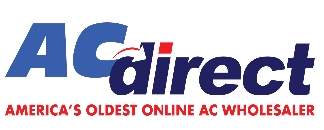How Much Does a New Furnace Cost in 2025
-
 By
Michael Haines
By
Michael Haines
- Jan 15, 2025

How Much Does a New Furnace Cost in 2025
Why Understanding Furnace Costs is Important
The furnace, a cornerstone of a comfortable and energy-efficient home, is a crucial investment. Whether bracing for the winter chill or aiming for a more efficient heating system, grasping the cost of a new furnace is key to making informed decisions. Anticipating the pricing can aid in effective budgeting, preventing unnecessary expenses, and selecting the right furnace for your needs.
Homeowners often contemplate replacing their furnaces for various reasons. Aging units that have served their time may struggle to meet heating demands, resulting in inconsistent temperatures and soaring energy bills. Frequent breakdowns and costly repairs can indicate it's time for a new unit. Furthermore, technological advancements have made newer furnaces more energy-efficient, promising long-term savings.
Factors That Influence the Cost of a New Furnace
The cost of a new furnace can vary significantly depending on multiple factors. Understanding these variables can help you decide when upgrading your heating system. Below, we break down the key elements that determine the price of a furnace.
1. Type of Furnace: Gas, Electric, or Oil
The type of furnace you choose is one of the most significant cost drivers:
- Gas Furnaces: Typically more expensive upfront but highly efficient, making them a popular choice for many homeowners. Prices generally range from $3,000 to $7,500, including installation.
- Electric Furnaces: These are often the most affordable upfront, costing between $1,500 and $3,500, but they may have higher operating costs depending on electricity rates.
- Oil Furnaces: Known for their high heating capacity, they are priced between $4,000 and $8,000 and are commonly used in regions where gas lines are unavailable.
2. Efficiency Ratings (AFUE Percentages)
The efficiency of a furnace is measured by its Annual Fuel Utilization Efficiency (AFUE) percentage, which indicates how much fuel is converted into heat. Opting for higher efficiency units (90–98% AFUE) may involve a higher initial cost, but saving you money on energy bills over time is a wise investment. On the other hand, mid-efficiency furnaces (80–89% AFUE) are more affordable upfront but may not be as cost-effective in the long run.
3. Size and Heating Capacity (BTUs)
The size of your furnace, measured in British Thermal Units (BTUs), must match your home’s heating needs. It's crucial to have professional load calculations done to determine the right size for your space. While a larger furnace with higher BTU output may cost more, an undersized unit could fail to heat your home effectively. This professional assessment ensures you're making the right investment for your home.
4. Installation Complexity
Installation costs can vary based on the complexity of the project:
- Adding or repairing ductwork can increase the overall price.
- Homes with zoning systems may require additional labor and equipment, adding to the cost.
- Replacement of an old unit is generally simpler than installing a furnace in a new construction.
5. Brand and Warranty Options
Choosing a premium brand with a reputation for reliability and durability may come with a higher price tag. However, these furnaces often come with extended warranties or service packages, offering you long-term peace of mind. While they may have a higher initial cost, these options can save you from unexpected repair expenses.
6. Regional Factors and Local Regulations
The cost of a furnace can also depend on your location. For example:
- Some areas have stricter energy-efficiency standards, requiring higher-efficiency units.
- Labor costs for installation will vary by seasonality and egion.
- Climate influences the type and size of the furnace needed.
How Much Does a Furnace Cost Based on Type?
The type of furnace plays a significant role in determining its price. Gas furnaces are generally the most common choice, but electric and oil options are available depending on your budget and specific needs.
Average Costs of New Furnaces in 2025
The cost of a new furnace in 2025 can vary widely based on the type, efficiency rating, and installation requirements. Below is an overview of price ranges for the most common furnaces.
1. Electric Furnaces
Electric furnaces are typically the most affordable option, making them an excellent choice for smaller homes or regions with mild winters. On average, the cost ranges between $1,500 and $3,500, excluding installation. While they have a lower upfront price, operating costs can be higher in areas with expensive electricity.
2. Gas Furnaces
Gas furnaces are the most popular choice due to their efficiency and reliability. These systems generally cost between $3,000 and $7,500, including the unit and basic installation. Natural gas is often cheaper than electricity, making these furnaces cost-effective for long-term use in colder climates.
3. Oil Furnaces
Oil furnaces are ideal for homes without access to natural or propane gas. They are known for their high heating capacity, with costs ranging from $4,000 to $8,000. However, oil furnaces require regular maintenance, such as fuel delivery and storage tank upkeep, which can add to overall expenses. They are the least environmentally preferred option due to excessive combustion exhaust.
Average Installation Costs
In addition to the furnace, installation costs must be factored into the total expense. Furnace installation costs range from $1,500 to $4,500, depending on the job's complexity.
- Homes requiring ductwork repairs or new ducts will see higher installation costs.
- Additional components like thermostats or zoning systems may also increase expenses.
How Long Should a Furnace Last?
The answer depends on the type of furnace and how well it has been maintained over its lifetime. Here’s an overview of the average lifespan by furnace type:
- Electric Furnaces: Generally last 15–20 years. They have fewer moving parts, which makes them less prone to mechanical failure.
- Gas Furnaces: Typically last 15–30 years, depending on maintenance and usage. Gas furnaces are durable but require regular servicing to achieve maximum lifespan.
- Oil Furnaces: These are known to last 15–25 years but need frequent maintenance, such as oil filter replacements and tank upkeep.
Signs Your Furnace is Nearing the End
If you’re wondering how long a furnace should last in your specific case, consider these warning signs:
- Increasing energy bills without a change in usage.
- Uneven heating or difficulty maintaining a consistent temperature.
- Frequent breakdowns and costly repairs.
- Rust, cracks, or other physical signs of wear and tear.
- A furnace older than 15 years might be nearing replacement, especially if it lacks efficiency features.
Attention to these signs allows you to plan for a replacement before facing a complete system failure.
Is It Time to Replace Your Furnace?
Determining whether to replace your furnace can save you from unnecessary expenses and discomfort. Here are key signs it’s time to upgrade:
- Rising Energy Bills: Older furnaces lose efficiency, increasing energy costs.
- Inconsistent Heating: Struggling to maintain a steady temperature is a red flag.
- Frequent Breakdowns: Replacements may be more cost-effective if repair costs add up.
- Strange Noises or Smells: Persistent rattling, banging, or burning smells could indicate serious issues.
Repair Costs vs. Replacement Costs
If repair costs on an older furnace exceed 30% of the price of a new furnace, it’s often wiser to replace the unit. Modern furnaces offer improved energy efficiency, which can offset initial costs through lower utility bills.
Benefits of Upgrading to a New Furnace
- Energy Efficiency: Modern furnaces with high AFUE ratings consume less fuel.
- Lower Bills: Efficient furnaces reduce long-term heating costs.
- Improved Home Comfort: Advanced systems provide better temperature control and air quality.
Considering these factors ensures your home stays warm and your energy bills remain manageable.
Tips to Save Money on a New Furnace
Investing in a new furnace doesn’t have to break the bank. Here are some practical ways to save money:
1. Explore Financing Options
Many HVAC companies and manufacturers offer financing plans that allow you to pay for your furnace over time. Look for interest-free or low-interest plans that intend to spread out the cost.
2. Take Advantage of Rebates and Tax Credits
In 2025, federal and state programs may provide rebates or tax credits for purchasing energy-efficient furnaces. Check if your local utility company offers additional incentives for upgrading to a high-efficiency unit.
3. Compare Quotes
Get multiple quotes from reputable HVAC contractors to ensure competitive pricing. Don’t hesitate to ask about promotions or discounts when selecting a furnace.
4. Research Brands
Choose a reliable brand with a strong warranty to reduce the risk of unexpected repair costs. Premium brands often provide better long-term value, even if the upfront cost is slightly higher.
5. Prioritize Proper Installation
The quality of installation affects efficiency, performance, and lifespan. Ensure you hire a licensed professional to install your furnace correctly and minimize future maintenance expenses.
6. Plan for Regular Maintenance
Routine servicing extends the lifespan of your furnace and ensures it operates efficiently, saving you money on repairs and energy bills.
By combining these strategies, you can effectively manage how much is a new furnace and reduce the overall financial burden of upgrading your heating system.
FAQs About Furnace Costs and Lifespan
How much does a furnace cost annually to maintain?
On average, annual furnace maintenance costs range from $100 to $300, depending on the type of furnace and the servicing complexity. Regular maintenance ensures efficient operation, extends the lifespan of your furnace, and reduces repair costs.
What impacts the efficiency of a furnace over time?
Lack of maintenance, dirty filters, worn-out parts, and poor installation can reduce a furnace's efficiency. Regular tune-ups, filter replacement, and ensuring the system is sized correctly for your home can help maintain peak performance.
Can a furnace last beyond its expected lifespan?
While the average lifespan of a furnace is 15–30 years, proper maintenance and timely repairs can help extend its life. However, older units are typically less efficient and may cost more energy bills, making replacement a better long-term choice.
Invest in the Right Furnace for Your Needs
Key considerations include the type of furnace, efficiency ratings, installation complexity, and maintenance requirements. While the initial investment may vary, a properly chosen and installed furnace can provide reliable heating and energy savings for years.
Choosing a furnace that balances affordability and performance is critical for achieving long-term value. Regular maintenance and professional installation further ensure maximum efficiency and durability. By planning carefully and considering your specific needs, you can make a confident investment in your home’s heating system.
Find Your Ideal Furnace at AC Direct
Looking for the perfect furnace for your home in 2025? At AC Direct, we offer:
- Incredible Pricing: Get access to top-rated furnaces at budget-friendly prices.
- Expert Guidance: Our knowledgeable team can help you select the right unit based on your home’s size and heating requirements.
- Flexible Financing and bad credit/no credit needed options: Enjoy easy payment options and take advantage of rebates to make your purchase more affordable.
Don’t wait to upgrade your heating system! A new furnace can improve your home’s comfort, efficiency, and energy savings. Explore our furnace options and find the best solution for your needs. Let us help you keep your home warm and cozy all year long!

 and now, NASCAR Racing Sponsor
and now, NASCAR Racing Sponsor










